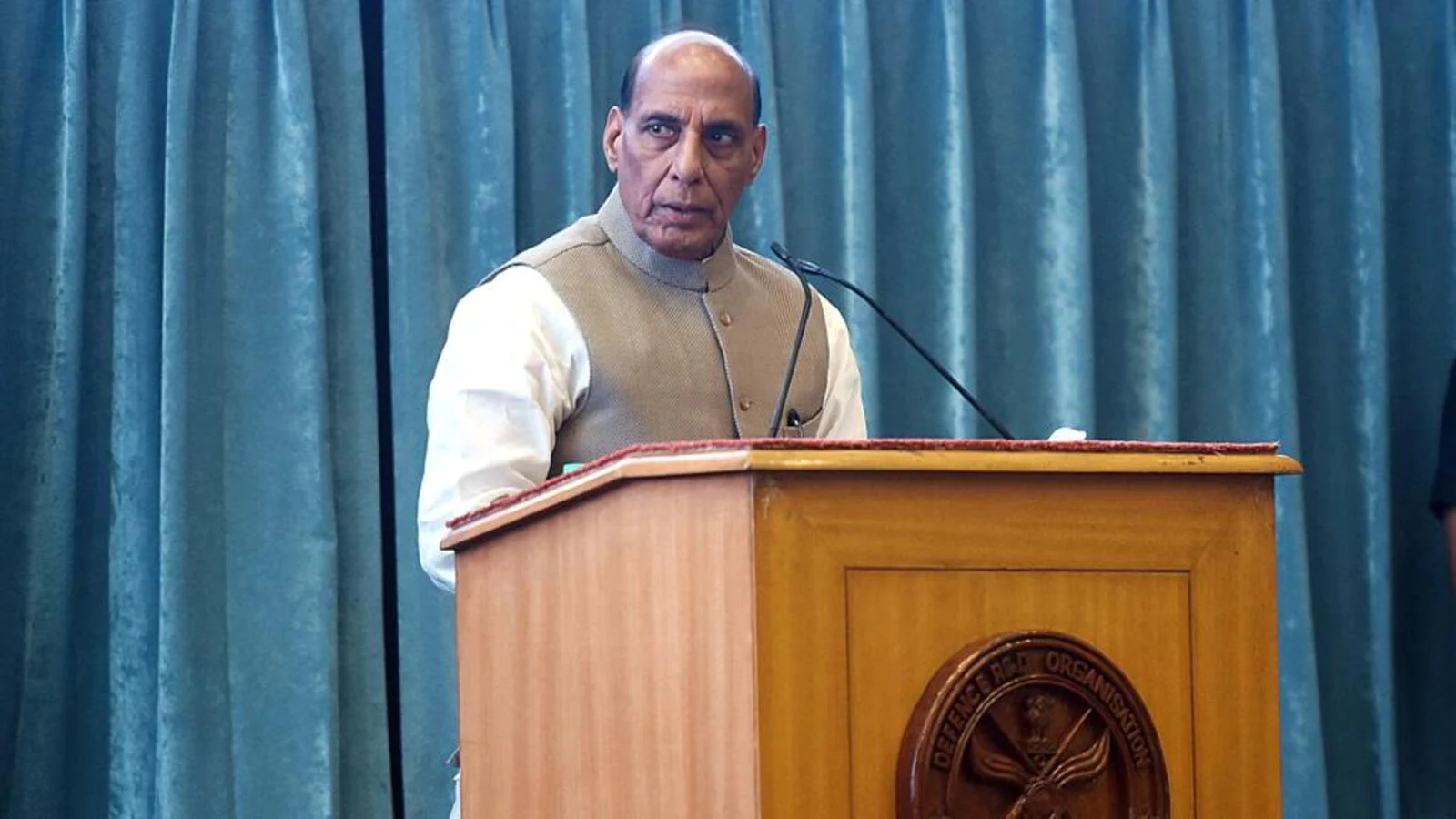[ad_1]
In a renewed push to aatmanirbharta (self-reliance) in defence, India on Thursday published a new list of 101 weapons and systems that will come under a phased import ban over the next five years, with the military hardware sought to be developed locally ranging from light weight tanks, naval utility helicopters and mounted artillery gun systems to medium altitude long endurance unmanned aerial vehicles, missiles and loitering munitions.
Releasing the third ‘positive indigenisation list,’ defence minister Rajnath Singh highlighted the pitfalls of operating imported weapons and systems whose software codes could be compromised and prove to be dangerous for the country’s security apparatus as it would open a “window of vulnerability.”
“Anyone can now break into the security system of a country with the help of different communication methods. No matter how strong the system is, if it is linked to another country, there is a possibility of a security breach. Newer defence systems and platforms are electronic and software intensive. They can be controlled or subverted from anywhere,” Singh said, making a pitch for indigenisation of complex weapons and systems.
The other military systems and platforms included in the third list are long range beyond-visual-range missiles that can hit targets at 250 km, long range guided bombs, medium range anti-ship missiles (ship launched), submarine-launched cruise missiles (anti-ship), long range reconnaissance and observation system (Lorros), high endurance autonomous underwater vehicle, weapon locating radar, next generation offshore patrol vessels, anti-radiation missile, counter-drone systems, rockets, torpedoes and other ammunition.
These weapons and platforms will be indigenised in phases between December 2022 and December 2027. This list comes on the back of two similar lists of 101 and 108 weapons and systems released in August 2020 and May 2021, respectively. The new list has taken the combined number of weapons and systems under a phased import ban by India to 310.
Import substitution of ammunition, which is a recurring requirement, has been given special emphasis, said Lieutenant General Anil Puri, additional secretary, department of military affairs. The defence minister said that domestic production of ammunition was critical as it ensured uninterrupted supply during war, adding that full attention was paid to self-reliance in ammunition in the first two lists as well.
Singh said self-reliance did not mean working in isolation from the world, but to work with the active participation of global partners within the country.
“Even under ‘Aatmanirbhar Bharat Abhiyan’, we have provisions which provide suitable opportunities and environment to foreign companies to invest, collaborate, set up joint ventures and earn profit,” he said, adding that the government was focused on creating an environment where public sector, private sector and foreign entities can work together and help India become one of the world’s leading countries in defence manufacturing.
The domestic industry is likely to receive orders worth ₹2,10,000 crore in the next five years as a result of the third list, officials said.
“The third ‘positive indigenisation list’ comes at a strategically important time. Given the current geopolitical scenario, the importance of being self-reliant in defence production is more apparent than ever and the industry is well poised to manufacture the 101 items indigenously and enhance the operational readiness of our forces,” said Society of Indian Defence Manufacturers (SIDM) president SP Shukla.
The list has come out at a time when complications stemming from the wide-ranging sanctions slapped on Russia by the US and its allies on the back of the war in Ukraine have posed new challenges for the India-Russia defence relationship, put India’s military preparedness to the test and assigned new urgency to reduce dependence on imported military hardware to stay battle-ready.
The defence minister said India would soon transform into a global defence manufacturing hub that catered to domestic requirements, besides being a dominant force in international market. He described the three lists as a “self-imposed vow” that can pave the way for “a strong and self-reliant New India.”
Since the notification of the first and second lists, contracts for 31 projects worth ₹53,839 crore have been signed by the armed forces, the officials said. Also, acceptance of necessity (AoN) for 83 projects worth ₹1,77,258 crore has been accorded, and cases worth ₹2,93,741 crore will be taken up in the next five to seven years, they added.
Under India’s defence procurement rules, AoN by the defence acquisition council is the first step towards buying military hardware.
The weapons and systems covered in the first two lists include artillery guns, missile destroyers, ship-borne cruise missiles, light combat aircraft, light transport aircraft, long-range land-attack cruise missiles, basic trainer aircraft, multi-barrel rocket launchers, assault rifles, sniper rifles, mini-UAVs, specified types of helicopters, next-generation corvettes, airborne early warning and Control (AEW&C) systems, tank engines and medium-range surface to air missile systems.
In February, Prime Minister Narendra Modi said customisation and uniqueness of military hardware was critical to hold the advantage of surprise over India’s adversaries and that it could be achieved only if weapons and systems are developed in the country.
On Thursday, the Defence Research and Development Organisation (DRDO) signed 30 transfer of technology (ToT) agreements with 25 industries. These technologies cover laser directed energy weapon systems, counter-drone systems, missile warheads, radar warning receivers, airborne electro-optical/infrared systems and tank ammunition.
SELF-RELIANCE PUSH
The latest import ban covers light weight tanks, naval utility helicopters, mounted artillery gun systems, unmanned aerial vehicles, missiles and loitering munitions
Domestic industry is likely to receive orders worth ₹2,10,000 crore as a result of the third ‘positive indigenisation list’
The military hardware in the first two lists included missile destroyers, ship-borne cruise missiles, light combat aircraft, light transport aircraft, long range land-attack cruise missiles and basic trainer aircraft
Since the notification of the first two lists, contracts for 31 projects worth ₹53,839 crore have been signed by the armed forces
…
[ad_2]
Source link

